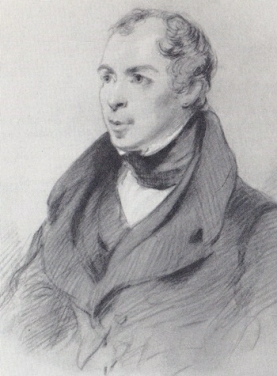Thomas Drummond (1793–1835) was the younger brother of James Drummond, also a botanist, who got his fame in annals of Australian botany as the founder of the first Australian botanical garden and as the first Government naturalist.

There is little known about Thomas Drummond’s early years, except that at the age of 21 he was called upon to run a nursery in Forfar in Scotland. In all these early years he collected plants all over Scotland and became known to the director of Kew Gardens, Sir William Jackson Hooker due to his distributions of Scottish mosses, called Musci Scotici. He also contributed his knowledge of Scottish plants to Hooker’s Flora Scotica (1821).
Hooker recommended Drummond to Sir John Franklin for a job on Franklin’s second arctic expedition (1825–27). Drummond was named assistant naturalist in charge of botany to Dr. John Richardson, whose main interest was in zoology and geology. This was the great time when these unexplored parts of the earth would give you a hundred new species in a week of only walking around. All these intrepid explorers and collectors leave there names in the scientific nomenclature for us to see. Citellus franklinii, Citellus richardsonii, Dryas hookeriana and of course a number of drummondii, Astragalus drummondii, Cirsium drummondii etc.
Drummond separated from the rest of the expedition to explore flora of Rocky Mountains. It’s almost incomprehensible that this man covered so much of this region just walking or by canoe or on horseback. Nowadays this distances are large distances even by car. Some of his endeavours became legends. He spent the whole winter in the Rockies without a tent. They are 2 versions to explain this. One says that he left his tent in Edmonton, which is hard to believe, considering where he was heading into. The more believable is that his horse fell into the river and lost the tent with some other equipment. During his exploits in western Canada he even met John Douglas of Douglas Fir (Pseudotsuga menziesii) fame. Another Drummond even altruistically changed the papers in Douglas’s plant press to save his specimens from spoilage. W. J. Hooker’s Flora Boreali Americana (1833) was based on findings of Franklin’s expedition, plus findings of Douglas and Menzies, however, the main contribution was made by Thomas Drummond. He collected of course insects, birds and mammals as well. These specimens were later used in Richardson’s book Fauna Boreali Americana (1829–37).
After these exploits he was named curator of Belfast Botanic Garden in 1828, however, it was not in his blood to sit and look after flowers and in 1831 he decided to become a independent plant collector, supported by Glasgow and Edinburgh botanic gardens and by private subscribers. His collections would be distributed by Hooker. He decided to collect in Texas but to get there he wanted to start in New York and go there through New Orleans. You can imagine his collecting zeal from two tons of paper he shipped along for his plant presses. He spent the next 4 years collecting on American continent, moving south, suffering from fevers and exhaustion and finding new plants all the time. Oenothera drummondii, Herbertia drummondiana, Phlox drummondii, etc.
Exploring through Florida, he made a trip to Cuba and this hard driven man finally succumbed to his illnesses and died there in 1835 at the age of 42.
The standard form of author citation is DRUMM.


